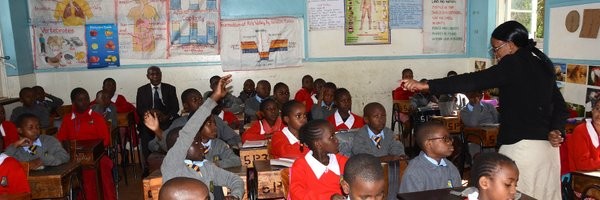
By Lydia Gichuki
Reforms in the education sector have made Kenya a top education performer in Eastern and Southern Africa, according to the Kenya Economic Update, Edition 25: Aiming High, Securing Education to Sustain Recovery by the Word Bank.
These reforms span from a competency-based curriculum (CBC), reforming professional teacher development, textbook policy, and management practices at the local level which sought to improve the quality of education.
These reforms, the report said have yielded great results despite being derailed by the Covid19 pandemic which hit about two years after the rollout of the CBC system in 2017.
According to the report, Primary education is reaching universal levels while secondary school enrolment increased by over 50 percent in the seven years before the pandemic.
These achievements are a result of increased spending and enrolment at all levels, as well as consistent improvements in learning outcomes before the pandemic. The share of the government budget on education increased by 19 percent in 2020.
Advertisements
about:blank
REPORT THIS AD
The report noted education spending per capita is also relatively high compared to countries in the region, which it highlights is a key factor in quality education.
Additionally, the performance also improved in numeracy, mathematics, and languages English, and Kiswahili.
Toward this end, minimum requirement satisfaction increased by 6 percent in numeracy, 16 percent in English, and 6 percent in Kiswahili. As a result, Kenya is outstanding in reading regionally.
Although numeracy dropped in 2018 against neighboring countries, early grade mathematics assessments between 2015 and 2021 improved from 71 percent in 2016, to 80 percent in 2021 in secondary schools.
In addition, secondary examinations performance improved from 11 percent in 2017 to 18 percent in 2021.
Despite these gains, Kenya has huge regional inequalities in all education outcomes. While most counties exceed 12 expected years of school, very low outcomes are concentrated in a few counties in the north and northeast of the country, in arid and semi-arid areas with EYS as low as 6.5 years.
Additionally, education outcomes are much lower in rural areas and for lower-income populations.
Net enrollment rates (NER) are significantly higher in pre-primary, primary, and secondary education, for children from households in the top 20 percent of the income distribution when compared to the bottom 20 percent.
According to the report around 17 million students and more than 320,000 teachers were affected by the closure of 30,000 primary and secondary schools in 2020.
Efforts to provide remote learning revealed a significant digital divide, with over 50 percent of the students being left out, mainly due to a lack of appropriate electronic devices, access to electricity, and internet connectivity.

Leave a Reply